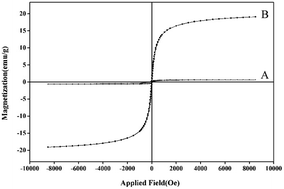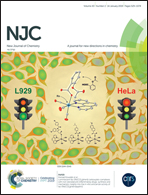Catalase immobilization onto magnetic multi-walled carbon nanotubes: optimization of crucial parameters using response surface methodology
Abstract
In this study catalase (CAT) immobilization onto magnetic multi-walled carbon nanotubes (mMWCNTs) was undertaken and response surface methodology (RSM) employed to determine the optimum immobilization conditions. The validity of the predicted values was established by comparing the actual and estimated values of CAT/mMWCNTs activity, 7.39 and 7.48 mM min−1, respectively. The kinetic parameters of the Michaelis–Menten constant (Km; 8.90 mM) and the maximum velocity of the reaction (Vmax; 0.040 s−1) were calculated for CAT/mMWCNTs in comparison with free CAT in buffer solution (7.65 mM and 0.047 s−1). The saturation magnetization (Ms) parameter for mMWCNTs was obtained at around 19.8 emu g−1, which is considerably higher than that for raw MWCNTs (Ms; 0.63 emu g−1) which shows the successful magnetization of MWCNTs. Furthermore, scanning electron microscopy (SEM) showed that enzyme molecules successfully immobilized onto mMWCNTs. The obtained results illustrated that mMWCNTs are potentially able to bind enzyme molecules and reduce the costs of industrial enzyme systems.



 Please wait while we load your content...
Please wait while we load your content...